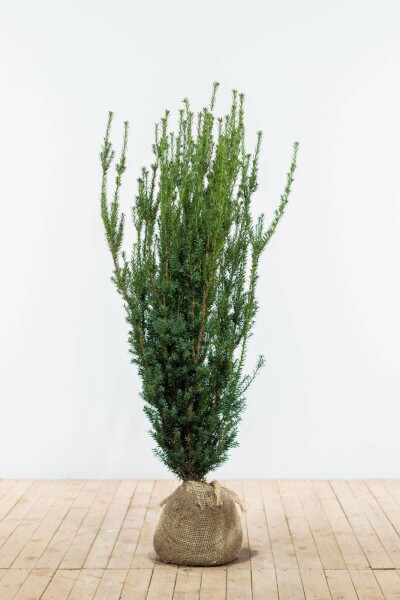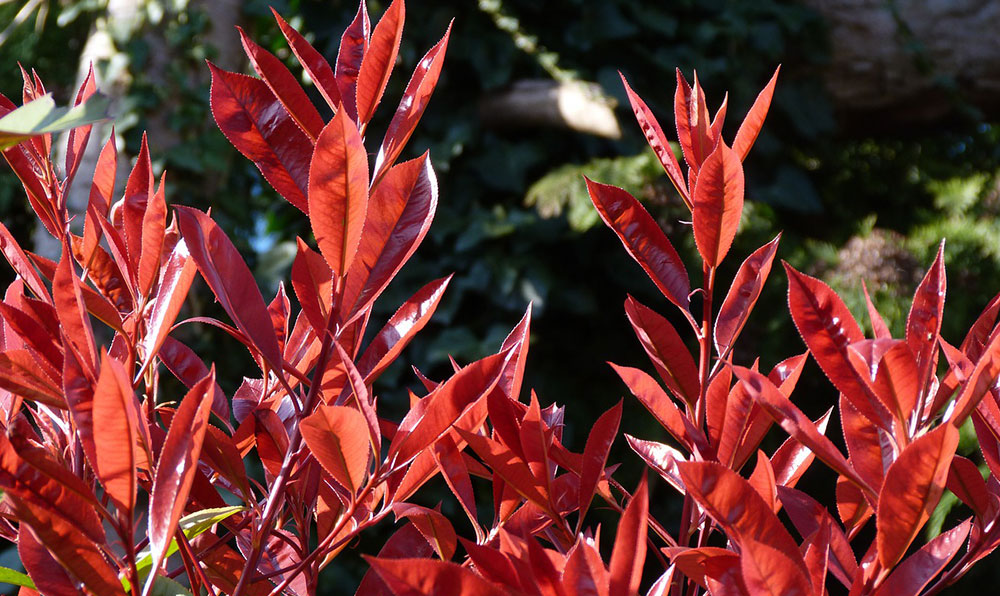Hedge Plants For Minimal Pruning
Hedge Plants For Minimal Pruning
Blog Article
Best Hedge Plants For Mediterranean Areas
Boost your garden's allure with lavish hedge varieties such as Yew (Taxus), Thuja, Laurel, Photinia, and Bamboo, commemorated for their structural integrity and ecological advantages.
Yew and Thuja provide evergreen coverage and winter strength, while Laurel offers fast growth and broad, fragrant leaves.
Photinia includes seasonal appeal with its lively red foliage, and Bamboo provides a low-maintenance, serene atmosphere.
These hedges improve air quality, reduce noise, and develop tranquil, personal spaces.
Appropriate planting, spacing, and upkeep ensure vigorous growth and eco-friendly consistency.
Explore how these rich ranges can raise your garden's beauty and well-being.
Key Takeaways
Change Your Garden With Lush Hedge Ranges
- Select Yew for its thick, evergreen growth and unrivaled longevity.
- Select Laurel for its quick development and broad leaves, ensuring quick privacy.
- Select Photinia for its lively seasonal foliage, which turns a striking dark red.
- Make use of Bamboo for a low-maintenance, winter-hardy hedge with visual appeal.
- Area plants 2-3 per meter and prune frequently for optimal development and health.
Popular Hedge Plants
When changing a garden with rich hedge ranges, it's important to think about popular hedge plants such as Yew, Thuja, Laurel, and Photinia due to their unique characteristics and benefits.
Yew (Taxus) is highly respected for its durability and thick, green growth, making it a prime choice for enduring landscapes.
Thuja is noted for its evergreen foliage and robust winter resilience.
Photinia includes seasonal vibrancy with red leaves that darken over time, developing vibrant visual appeal.
Laurel provides fast growth and fragrant, broad leaves, ideal for quick personal privacy.
In Addition, Bamboo is an exceptional option for atmosphere, providing a low-maintenance, winter-hardy choice that enhances the garden's visual with its classy, swaying walking sticks.
These selections cater to a range of horticultural requirements and preferences.
Benefits of Garden Hedges
Garden hedges use a plethora of benefits, making them a valuable addition to any landscape. These natural barriers are cost-efficient to carry out and offer significant wind defense, improving air circulation and adding to noise reduction. The thick foliage of hedges like Thuja and Beech ensures personal privacy by obstructing presence, producing a serene and remote environment.
Hedges likewise play an essential function in microclimate policy, providing a steady environment that fosters plant development and minimizes temperature level fluctuations. Their complex leaf structures filter pollutants, enhancing air quality and contributing to a much healthier garden ecosystem.
Furthermore, hedges stand out in noise decrease, absorbing and deflecting acoustic waves to lower ambient sound levels. This dual performance of providing both acoustic and visual personal privacy enhances the overall tranquility and visual appeal of any garden.
Planting and Maintenance Tips
For a successful hedge, meticulous preparation of the planting area is vital. Guarantee the soil has appropriate pH and drain to support strong root development.
Space the plants properly for the chosen species. Water the hedge regularly during its initial development stage, adjusting as needed with seasonal changes.
Execute a organized bug control and disease prevention technique, utilizing organic or chemical treatments when needed. Frequently check for aphids, mites, and fungal infections.
Apply mulch to retain moisture and reduce weeds. Seasonal pruning promotes thick development and air blood circulation, necessary for plant health.
Following these standards will assist you cultivate a lively, properly maintained hedge that boosts the appeal of your garden.
Spacing and Cutting Standards
Spacing and Trimming Guidelines
Proper spacing and cutting are important for cultivating healthy, aesthetically appealing hedges. Appropriate spacing guarantees each plant receives sufficient nutrients, light, and air flow.
Follow these guidelines for optimal hedge upkeep:
- Spacing: Position hedge plants 2-3 plants per meter to motivate robust growth.
- Pruning Methods: Regular pruning is essential for keeping wanted hedge height and shape. Trim new development in summer and cut down older wood during winter season.
- Seasonal Care: Change trimming schedules and approaches according to seasonal requirements to make sure plant health.
- Hedge Height: Regularly display and trim to keep the wanted hedge height and accomplish consistent aesthetic appeals.
Abiding by these steps will guarantee your hedge prospers, enhancing both the appeal and performance of your garden.
Choosing the Right Hedge
Selecting the Right Hedge
Picking the suitable hedge includes evaluating aspects such as mature height, foliage density, and ecological strength. Successful hedge plant selection needs understanding each species' development attributes and site-specific adaptability.
For example, Yew (Taxus) provides outstanding durability and thick growth, while Thuja is noteworthy for its winter strength. Additionally, considering maintenance requirements is important; fast-growing types like Laurel or Privet need routine trimming, whereas low-maintenance options like Bamboo or Ivy might be more suitable for those seeking minimal upkeep.
Environmental elements such as soil type, light schedule, and wetness conditions need to likewise assist the choice procedure. This mindful approach makes sure the picked hedges will prosper, offering both functional and aesthetic advantages to the garden landscape.
Shipment and Planting Guidance
To guarantee your hedge plants thrive, they ought to be provided by specialized carriers and planted without delay upon arrival.
Follow these vital steps for successful planting:
- Soil Preparation: Enrich the soil with natural matter to improve drainage and nutrient material.
- Planting Depth: Create a trench two times the width and equivalent to the depth of the root ball.
- Watering Techniques: Water completely after planting, keeping the soil regularly wet but not saturated.
- Mulching: Use a layer of mulch to maintain wetness and reduce weeds.
Customer Support and Service
Provided the important function of timely assistance in horticultural pursuits, our client support team is offered 6 days a week through telephone, e-mail, and social media to offer expert guidance and quickly address any concerns. Their dedication to quick response times ensures customer satisfaction by dealing with inquiries associated with plant health, ideal planting methods, and maintenance schedules.

Response Time
Within 24 hr
Social Media
This detailed assistance system, reinforced by a stellar 9.3/ 10 client score, highlights our dedication to boosting the gardening experience for every single customer.
Frequently Asked Questions
How Long Does It Take for Hedge Plants to Establish?
Hedge plants typically require one to three years to become fully established, with the exact duration varying by species and growing conditions.
Effective care during this critical period is essential for robust development. Constant watering, alert weed control, and proper fertilizer application are essential in promoting strong root advancement.
For instance, fast-growing species like Laurel may establish quicker, while slower-growing ranges such as Yew may take longer. Persistent maintenance accelerates the establishment procedure, leading to healthy and dense hedges.
What Are the very best Hedge Plants for Personal Privacy?
The concern of the very best hedge plants for privacy involves examining evergreen and deciduous choices.
Evergreen hedges like Thuja, Laurel, and Cypress offer year-round coverage, ensuring constant personal privacy.
On the other hand, deciduous hedges such as Beech use seasonal personal privacy, shedding leaves in chillier months.
Key upkeep ideas for privacy hedges consist of routine trimming, fertilizing in spring, and proper spacing-- normally 2 to 3 plants per meter.
Furthermore, consistent watering and thorough weed removal are crucial for promoting healthy, thick growth.
Can Hedge Plants Bring In Wildlife to My Garden?
Yes, hedge plants can draw in wildlife to your garden by providing necessary benefits like shelter, food, and nesting websites, consequently enhancing regional biodiversity. For instance, yew, holly, and laurel are excellent for attracting birds, while ivy supports a range of insects.
Nevertheless, it is essential to keep in mind that there are some disadvantages, such as increased upkeep to manage bugs and regular maintenance. Thoroughly selecting and preserving hedge ranges can help stabilize these benefits and disadvantages, eventually cultivating a dynamic and sustainable ecosystem in your garden.
Are There Any Blooming Hedge Plants Available?
Yes, there are flowering hedge plants available that can improve the appeal of your garden.
For example, Elaeagnus, also understood as Olive Willow, produces aromatic white flowers in the fall, adding a touch of sophistication.
Photinia, another popular choice, showcases vibrant red leaves that develop into an abundant green, developing a dynamic visual impact throughout the seasons.
To guarantee these plants grow, it's vital to practice appropriate pruning methods and seasonal upkeep, such as cutting brand-new development in the summer and cutting back in the winter.
These steps will assist keep the health and aesthetic appeal of your blooming hedges.
How Do I Avoid Bugs in My Hedge Plants?
To avoid pests in hedge plants, utilize natural pest control approaches and keep correct hedge care. Present useful insects like ladybugs, which victimize hazardous bugs, to create a balanced environment.
Regularly inspect your hedges for indications of problem and quickly eliminate any afflicted parts to prevent the spread. Ensure the health of your hedges by applying balanced fertilizers and offering appropriate water.
Utilize mulching to keep soil moisture and appropriate spacing to lower plant tension and promote robust development. These practices jointly help in reducing insect problems and preserving a healthy hedge.
Conclusion
In essence, selecting the best hedge ranges such as Yew, Thuja, and Laurel can transform any garden into a relaxing haven. These plants offer year-round greenery, improve aesthetic appeal, and deal read more practical benefits like noise reduction and wind protection.
Proper planting techniques, precise spacing, constant watering, and seasonal trimming are important for optimal development.
Reputable delivery services and expert customer assistance guarantee a seamless experience from purchase to planting, making it easier than ever to elevate your outside area.
Garden hedges offer a wide range of benefits, making them an important addition to any landscape. These natural barriers are cost-efficient to implement and provide substantial wind security, enhancing air blood circulation and contributing to sound decrease. The dense foliage of hedges like Thuja and Beech makes sure privacy by blocking exposure, creating a tranquil and secluded environment.

Pruning Methods: Routine pruning is vital for preserving preferred hedge height and shape. Cut brand-new development in summer season and cut back older wood throughout winter.
Report this page